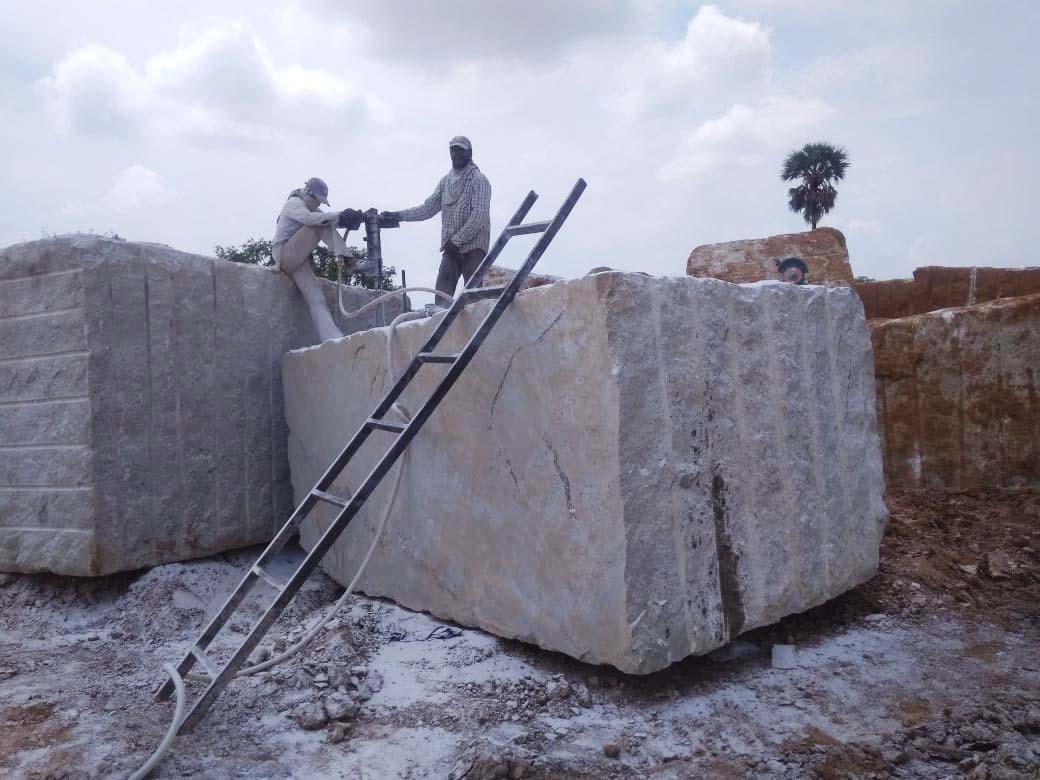Unearthing the Rich Background and Lasting Practices of Granite Quarrying
As we base on the precipice of revealing the elaborate tapestry of granite quarrying, a trip through time reveals not simply the physical act of drawing out stone yet additionally the social and historical significance woven right into the very textile of this method. From the old beginnings that laid the foundation for contemporary quarrying techniques to the lasting techniques that are shaping the future of this sector, each chisel mark on granite surfaces informs a tale waiting to be discovered (granite quarries in south africa). The heritage of granite quarrying stretches much past simple removal; it is a testament to human ingenuity, strength, and the enduring allure of this magnificent stone
Old Beginnings of Granite Quarrying
Dating back to ancient people, the method of quarrying granite has been an important part of human history and building innovation. The earliest evidence of granite quarrying days back to old Egypt, where enormous pyramids and complex sculptures were crafted from this durable rock. The Egyptians made use of primitive tools to extract granite blocks from quarries, showcasing the importance of this material in their huge building and constructions.
Moving ahead in history, the Greeks also made considerable payments to the quarrying of granite. The Greeks utilized granite in different architectural wonders, such as holy places and statuaries, showing their skill in shaping and sculpting this sturdy rock. The Romans further fine-tuned the techniques of quarrying granite, using innovative devices like blades and hammers to essence and form granite for their iconic frameworks.
With the centuries, the technique of quarrying granite has evolved, with modern-day technologies enhancing efficiency while preserving the classic allure of this all-natural stone - granite quarries in south africa. From old human beings to contemporary builders, the legacy of granite quarrying remains to form our world
Development of Quarrying Strategies
The development of quarrying techniques has actually been noted by a constant development in the direction of better effectiveness and accuracy in extracting granite. From the rudimentary approaches employed by our forefathers to the sophisticated innovations used in contemporary quarrying operations, the market has undertaken considerable improvements. Early quarrying methods entailed manual work with fundamental tools such as knives, hammers, and wedges to remove granite blocks from the planet. As worlds advanced, techniques like fire-setting and primitive explosives were introduced to assist in the extraction procedure.
In more recent times, the arrival of machinery changed the quarrying industry, enabling faster extraction rates and raised efficiency. Technologies such as ruby cable saws, high-pressure water jets, and pneumatically-driven drills have come to be standard in contemporary quarries, allowing for exact cutting and reduced waste. Innovations in computer-controlled tools and 3D modeling have enhanced quarrying procedures, leading click this to marginal environmental influence and improved sustainability techniques. As the demand for granite remains to increase, the development of quarrying methods continues to be indispensable to meeting market requires successfully and sustainably.
Social Relevance of Granite
Granite holds a profound cultural relevance across different human beings due to its enduring presence in building masterpieces and revered monoliths. The cultural relevance of granite expands past its physical characteristics; it embodies durability, stability, and timelessness, making it an icon of withstanding traditions and practices.

Lasting Practices in Quarrying
Among the abundant history of granite quarrying and its cultural relevance lies an expanding emphasis on sustainable methods within the sector. As ecological recognition and concerns concerning source depletion have heightened worldwide, the quarrying sector has actually increasingly accepted sustainable methods to lessen its effect on the atmosphere and surrounding communities.

Furthermore, recovery and recovery of quarry sites post-extraction are important to sustainable techniques. By restoring quarried areas to a natural or helpful state, such as producing wildlife environments or entertainment areas, quarriers can counter the ecological impact of their operations and contribute positively to the local ecological community.
Heritage of Granite Quarrying
With a historical backdrop steeped in workmanship and commercial progress, what sustaining influence has granite quarrying left on the landscape of modern-day society? The heritage of granite quarrying transcends simple extraction practices; it has formed architectural marvels, metropolitan landscapes, and cultural heritage worldwide. The long lasting nature of granite has actually made it a recommended choice for monoliths, buildings, and framework, standing as a testament to the skill and creativity of quarry workers throughout generations.
Moreover, the financial impact of granite quarrying can not be neglected. The sector remains to offer work opportunities and drive local economic situations in areas where granite extraction prevails. It has additionally stimulated technical advancements in quarrying methods and go to my blog tools, leading to extra efficient and lasting techniques.
In terms of sustainability, the heritage of granite quarrying includes efforts to minimize ecological influences with improvement projects and liable source management. By stabilizing financial passions with environmental stewardship, the industry strives to ensure that future generations can continue to benefit from this long-lasting natural deposit.
Final Thought
